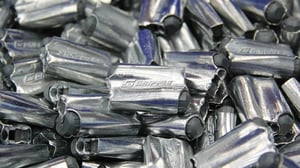Are you trading time for money?
We ask a lot of machining businesses what they do, and they often tell us that they trade machining time for money. Whilst this is true, I believe they are selling themselves short with this description and missing a key strategic opportunity.
What they provide to their customers is much more than just a machine with an operator, traded at an hourly rate. They provide time-served experience in a particular industry, machining process, or material, as well as specialised equipment with the expertise to operate it.
It is the combination of process-specific knowledge, reputation, manufacturing capabilities, and business processes that all combine together to provide a unique offering to customers.
It is this unique offering that provides additional value and becomes the competitive advantage of the machining business, making it resistant to competition.
At the end of the day, if all a business does is trade machine time for money, then anyone who buys identical machining equipment can now directly compete with them. That is quite a low barrier to entry, so it is essential for machining businesses to know what sets them apart, and strategically build upon their unique selling point to build a defensible business for the long term.
What are you selling?
At one end of the manufacturing spectrum, we have patented products with a renowned brand, such as the Sheffield success story of Gripple. In this case, the defensibility of the manufacturer comes from the product they are making, its legal clout and its market positioning. By their very nature, there are few small-batch manufacturers who make an end product like this.
However, as we have argued above, most small-batch manufacturers aren’t just selling machining time. They are somewhere in the middle, on a spectrum between renting out machine time and selling products.

Greater defensibility, higher profit margins and long-term sustainability are all the rewards of moving further toward the right end of this spectrum.
For many manufacturers, this is simply a matter of self-image. Take a look at your website, or that of your competitors, where do you position yourself – is it Business A, Business B or Business C?
Business A: We have a range of capabilities, covering deep hole drilling, CNC turning and boring up to lengths of 4m. We have been in business for 20 years and conduct in-house compliance testing.
Business B: We have 20 years’ experience making high-precision deep-hole components for the oil & gas industry, specialising in short lead times and regulatory compliance.
Business C: For oil & gas businesses wanting deep-hole components on a short lead-time with full regulatory compliance, we are the go-to machining partner, with 20 years’ time-served experience.
For companies positioning themselves like Business A, there will be a lot of competition as they are just renting out a machine to anyone who needs their capabilities. The only differentiator between themselves and their competition will be price, so they will end up in a race to the bottom, only winning contracts by sacrificing profitability through wafer-thin margins.
In contrast, Business C is positioning itself in a way that is highly targeted to the oil & gas industry, adding value to this sector with the short lead times and regulatory compliance that allow them to charge a premium price. Very few companies are positioning themselves like Business C, so Business C enjoys better profit margins, higher customer loyalty and greater defensibility from new competition.
How can you double down on your unique selling point?
The reality is that most machining businesses are already serving one or more specific markets with specialised equipment and technical expertise that provide additional value and give some level of differentiation from the competition.
However, the proactive understanding of this market, what they value, and the strategic positioning to move further towards the product end of the spectrum is much rarer.
This presents an opportunity to you and your machining business – if you can become the go-to manufacturing partner for a specific customer segment, by understanding their needs and proactively positioning your capabilities and marketing, then you can enjoy the success and longevity that more product-oriented businesses enjoy.
What do you think?
What are your thoughts on the strategic positioning of machining businesses – is targeting specific customer segments a winning formula or do you disagree with what you’ve read in this article?




